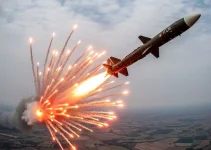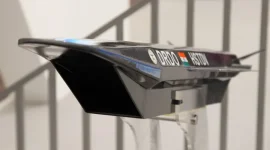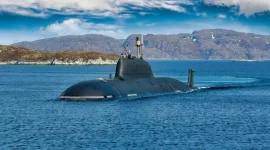- Views: 61
- Replies: 2
The Indian Air Force (IAF) is advancing its modernisation and self-reliance goals with a planned follow-on order for 97 Tejas Mk1A Light Combat Aircraft (LCA).
This new batch of the indigenous fighter jet will feature a higher percentage of Indian-made components and upgraded software, incorporating feedback from the initial batch of aircraft set for delivery.
The formalisation of the order for the additional 97 jets is anticipated in the coming year, with production scheduled to commence by early 2028.
This move is a significant step under the 'Aatmanirbhar Bharat' initiative, aimed at bolstering the nation's indigenous defence manufacturing capabilities. The deal for these additional aircraft is estimated to be worth approximately ₹67,000 crore.
A primary objective for this second batch is to increase the aircraft's indigenous content from the current level of around 60%.
The state-owned manufacturer, Hindustan Aeronautics Limited (HAL), is working with the Aeronautical Development Agency (ADA) and private industry partners to replace various imported systems, known as Line Replaceable Units (LRUs), with domestically produced alternatives.
Key areas for this push include critical avionics, sensors, and electronic warfare systems, which will reduce dependency on foreign suppliers and enhance supply chain security.
This new set of Tejas Mk1A aircraft will also benefit from operational feedback gathered from the first order of 83 jets, which was signed in 2021 for ₹48,000 crore.
While the core design—featuring an advanced Active Electronically Scanned Array (AESA) radar, a modern electronic warfare suite, and mid-air refuelling capability—will be retained, the forthcoming aircraft will incorporate refinements. These improvements may include enhanced cockpit ergonomics and modifications to improve maintenance efficiency.
Significant upgrades are planned for the aircraft's software, particularly in its mission computer. These updates will allow for the seamless integration of a wider array of indigenous weapons.
The Tejas Mk1A is already equipped to handle the Astra Mk1 beyond-visual-range air-to-air missile, the Rudram anti-radiation missile, and the Smart Anti-Airfield Weapon (SAAW). The new software will pave the way for next-generation munitions currently under development by the DRDO, expanding the jet's operational flexibility in both air-to-air and air-to-ground roles.
The Tejas Mk1A is a crucial element in the IAF's strategy to replace its ageing fleets of MiG-21, MiG-23, and MiG-27 aircraft. As a 4.5-generation multi-role fighter, it provides a formidable and cost-effective platform to counter regional adversaries, including Pakistan's JF-17 and China's J-10 fighters.
Its compact design and advanced avionics make it highly suitable for operations in contested airspace.
To meet the demanding production schedule of delivering all 97 jets by 2032, HAL is increasing its manufacturing capacity.
The company aims to produce up to 24 aircraft annually by activating a third assembly line at its facility in Nashik, in addition to its two lines in Bengaluru.
HAL is also collaborating with private sector firms like Larsen & Toubro and VEM Technologies for the supply of major sub-assemblies.
However, the programme faces challenges. Past production has been affected by supply chain disruptions, notably delays in the delivery of the F404-GE-IN20 engines from General Electric.
Ensuring that newly indigenised components are rigorously tested and certified without causing production delays will be critical for HAL to meet its ambitious targets and strengthen India's air defence capabilities.




